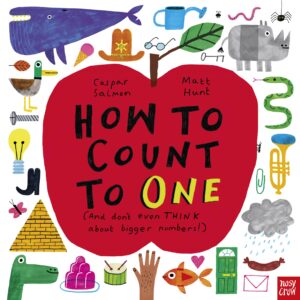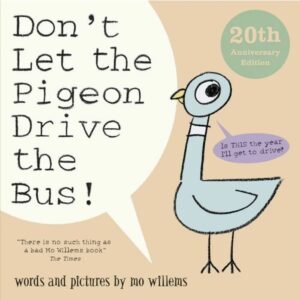Annelies Judson introduces us to some of her favourite interactive books, starting with Press Here, before reviewing Let’s Go, Flo!
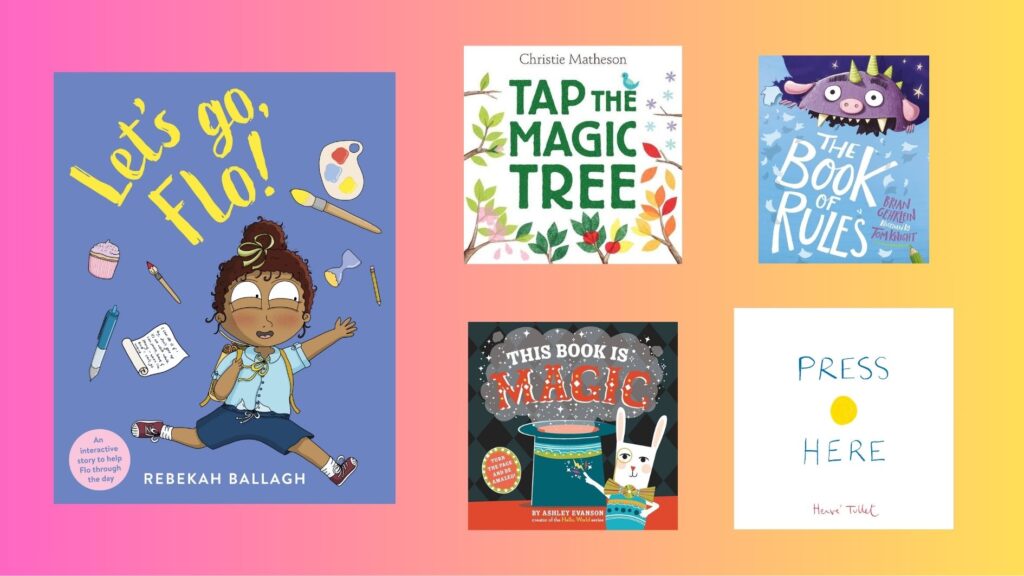
If you’ve never read an interactive book to a kid, you’re missing out. The idea with these books is that the child-reader has to perform certain actions, such as pressing or shaking the book, or blowing on the pages, in order to make the book ‘work’. Even though the conceit is obvious to the adults, for kids, the idea that they are causing the change they see as they turn the page is extremely captivating. This is true even for older kids who ‘get it’. It’s too much fun not to suspend your disbelief.
In this piece, I start us off with some already published books spanning quite a few years, and finish with a review of the newly released Lets Go, Flo! which is an interactive book with a purpose—and an excellent one too.
So, dear reader, please…scroll down!
…
…
…
Press Here, by Hervé Tullet
A luminary of the interactive book genre is French writer and artist Hervé Tullet. His best-selling Press Here was released in 2010, but he has a number of other interactive books, including Tap Tap Tap, Mix It Up and Say Zoop.
However, none of them reach the simple, joyous, artistic exhilaration of Press Here. It starts with a yellow dot that the reader is asked to press. Turn the page, and the dot has changed. Each page, another request of the reader to do some kind of action, and each page turn, another change. The dots get bigger, change position and disappear, among other things.
The joy is helped by the simple geometric art in primary colours, which gives a sense of movement and life to the pages. The focus is on what the dots are doing, not trying to distract you with a storyline or a message, which in this case works perfectly with the vibe of the text. If you haven’t read it, I’d be hunting down a copy immediately.
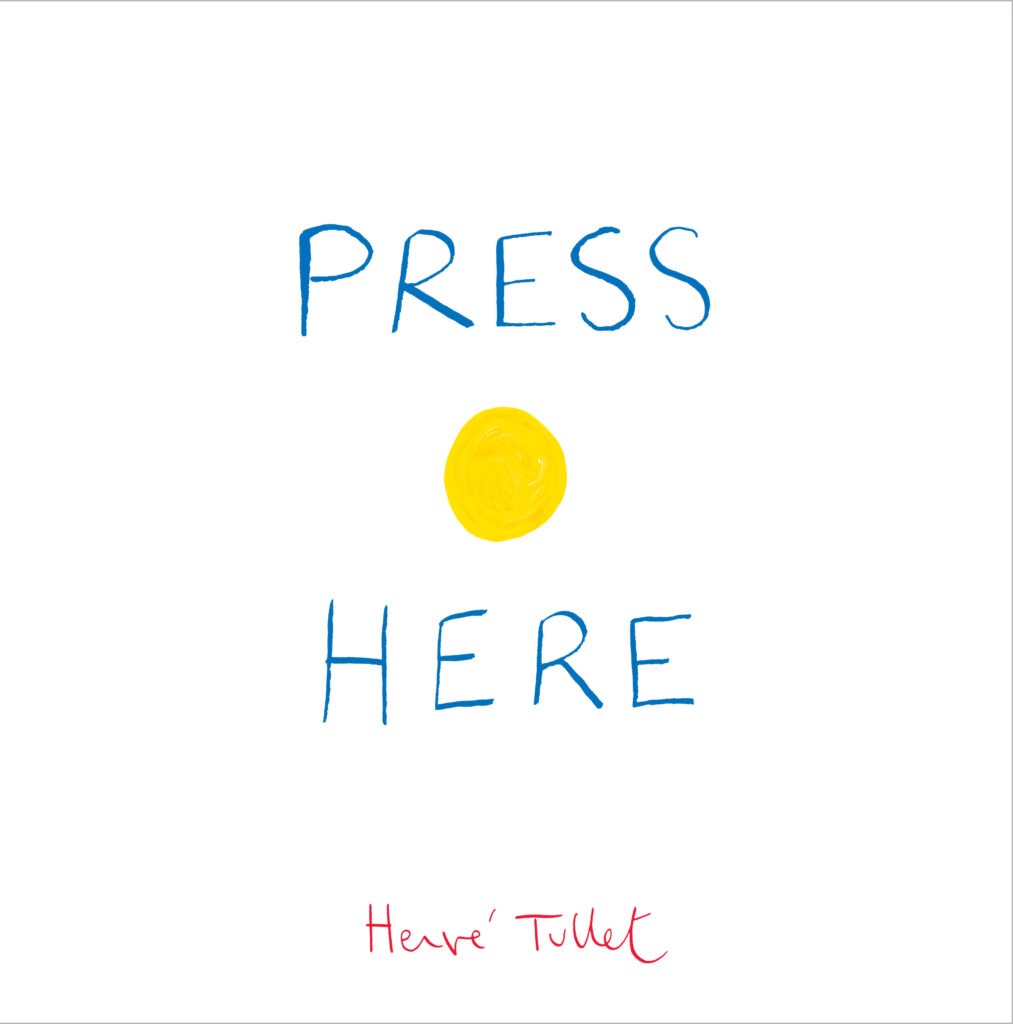
Don’t Push the Button!, by Bill Cotter
The concept of this book is very simple. Every left-hand page has an illustration of a red button. Larry the monster is illustrated on the opposite page. Initially, he tells the child reader not to push the red button. But then, he gives into the temptation to tell the child to push it, which is a sweet representation of the challenges of asking children not to do something. Each subsequent page, something happens to Larry mostly as a result of pushing the button, but there are also some other instructions, like shaking the book and tickling Larry’s tummy. It’s a cute book and the interactivity makes it fun, but it’s not my favourite of the bunch.
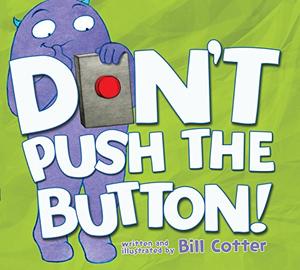
High Five, by Adam Rubin & Daniel Salmiers
The idea here is a good one, but I’m not a massive fan of the execution. The storyline is that there is a high five competition that the child reader is being trained for and then participates in. There are illustrated hands that the reader has to give a high five to. My first warning to adults reading this book is that it is very very hard and/or painful to hold a book when your child is trying to high five it with all their might! But I also found the format pretty repetitive, with a lot of high fives (some of which ended up with the book on the ground), and a storyline that requires kids to follow along with the concept of a sports competition but without a lot of words to help scaffold their understanding. It’s something a little different in the world of interactive books, but for me it (ironically) didn’t quite hit the mark.

The Book of Rules, by Brian Gerhlein & Tom Knight
My kids absolutely loved this book. The idea is that you have to follow all the rules in the book or you will be fed to a monster. There’s nothing interactive about the pages themselves (no tapping or touching the book) but instead the actions need to be performed physically, such as waving at the person next to you and closing your eyes.
My one quibble is that the very first instruction exhorts the children to move positions, which means that either
(a) they then don’t see the rest of the book (my kids don’t care about this), Or
(b) the reader l has to move with them (not ideal) or has to ask them to move so they can see the book, which is technically not following the rules that they are trying so hard to follow in the first place.
So it might be a hard sell for the more rule-oriented child. But it’s such a fun book, I think this is forgivable.
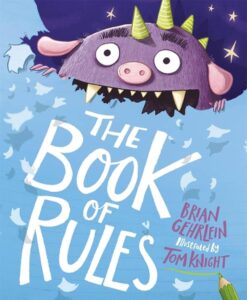
Tap! The Magic Tree, by Christie Matheson
I really love this book because it works on a few levels despite being quite simple. The whole story is about the changing of the seasons…but at no point is that explicitly stated. Each page is just an illustration of a tree, and an interactive instruction. Each instruction moves the tree slightly further along the timeline, like rubbing the tree and then leaves growing (spring) and wiggling fingers to make snow (winter). Every interaction is different from the others, which I really like. And to top it all off, it’s written in a lovely poetic rhyme with great metre.
Something about the book is magical, and I can’t quite put my finger on it, which I think means that it’s just that everything is so beautifully balanced. It’s a really great example of the genre.
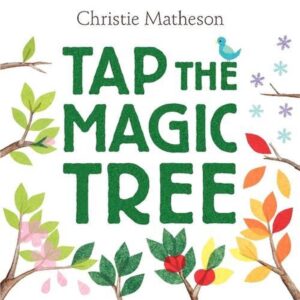
Huff and Puff, by Claudia Rueda
This is on the more basic side for interactive books, and uses the familiar story of the Three Little Pigs. The text is spare and sparse, which I quite liked. But the only interactivity is the reader being asked to play the role of the big bad wolf and “huff and puff”. It works well enough, although the twist at the end is that the reader blows out the candles of a cake, which is a little obscure for younger readers to understand.
There’s nothing bad about the book, but when compared to the other offerings here, it doesn’t quite stand up. Taken alone though, it’s a fun one.
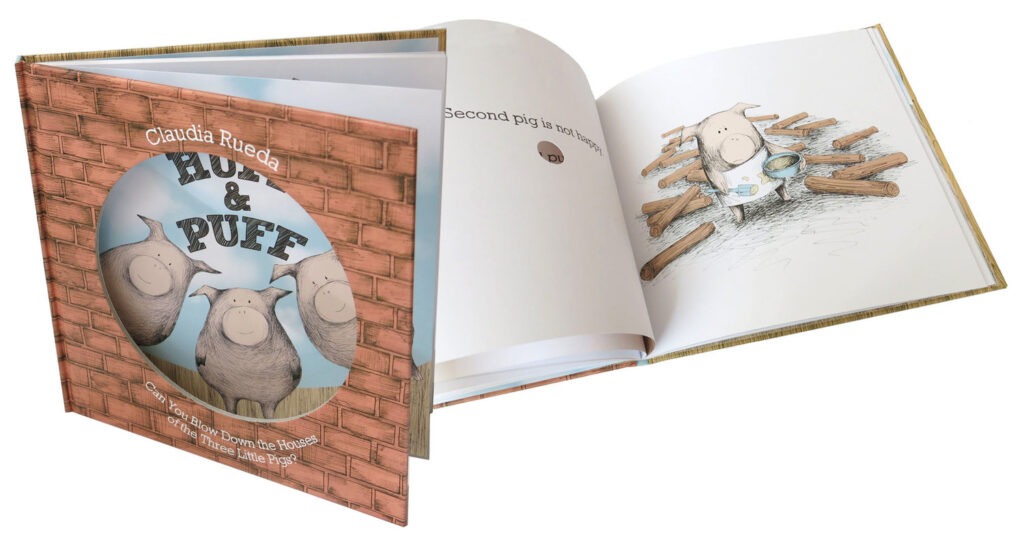
Stir, Crack, Whisk, Bake: A Little Book About Little Cakes, by Maddie Frost
A note about this book, and indeed, most of the other interactive books in this list: they do not work well as digital books. I got this one out digitally because it happened to be available in that format. Unfortunately, a book that asks you to swipe the page or tap items on the page does not have quite the intended effect when it causes the digital page to turn over or the phone to prompt with a menu. However, the text itself is a great one and if you can get a physical copy it’s well worth it.
The interactions on each page are all different to each other, which gives nice variety. They’re also quite different to many of the other books because the ‘story’ is about making cupcakes, so the actions are quite literal to do with the process of cooking, eg. stirring the bowl with your finger, dragging the ingredients to the benchtop. The illustrations also include some measurements so there is a definite educational element to it but it doesn’t detract from the fun of the story. The illustrations are also really bright and fun. Overall: great.
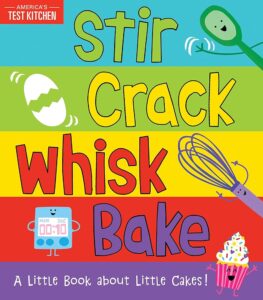
This Book Is Magic, by Ashley Evanson
The shtick here is that the reader is magic, and the book uses a whole lot of magical words and actions (wiggling your fingers and saying things like “presto change-o!”) to make magic tricks happen.
The writing is pretty good but I felt it was over-illustrated. When you are trying to make it seem like the reader is making the book change, then it needs to be really clear what change is happening on each page. In this book, the illustrations are quite busy, and the way the changes are represented just isn’t that clear. I found myself having to explain parts to my children, and the joy of the interactivity was somewhat lost. A note to anyone who wants to write interactive books: keep the illustrations simple.
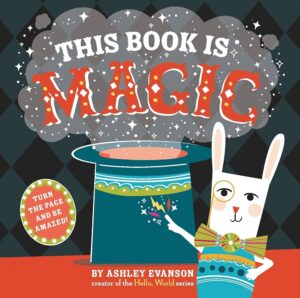
Let’s Go, Flo! by Rebekah Ballagh
Let’s Go, Flo! is something a little more sophisticated and purposeful than the pure enjoyment of the other interactive books. But this isn’t to its detriment. Essentially, it is a how-to guide for managing emotions. The reader is asked to help Flo breathe when she’s feeling worried, find five green things to help her calm down when she’s feeling stressed, “pack” her bag so she’s organised, and so on. The clever part is that not only does this teach children how to manage their emotions, but it also develops the skills necessary in order to do this effectively. And not in a didactic way either. The story has no real narrative beyond a “day in the life” but the writing is well executed, the illustrations are cute, and the interactive parts are interesting. It works.
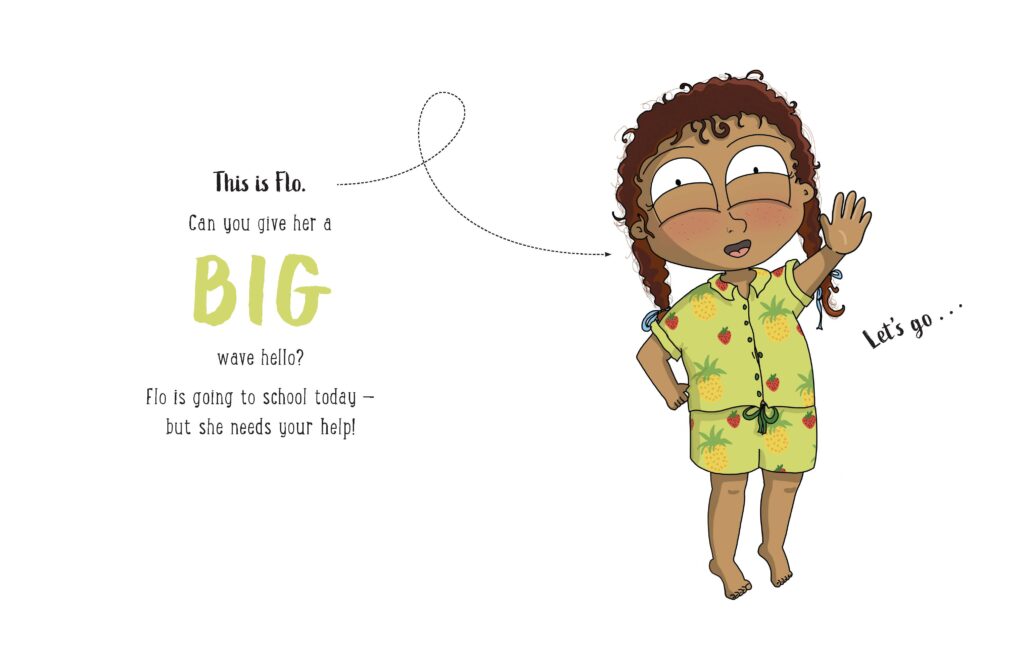
But wait—there’s more! The last few pages of the book are for adults, and they explain exactly which skill/s can be learnt from each page, give a list of supplementary activities that can be done as you read the story, provide talking points for adults reading the story with children, and just generally give helpful parenting advice. So there are really three levels this book works at—the level of the fun, interactive story; the level of the executive functioning skills; and the adult help level. That’s pretty impressive for a picture book.
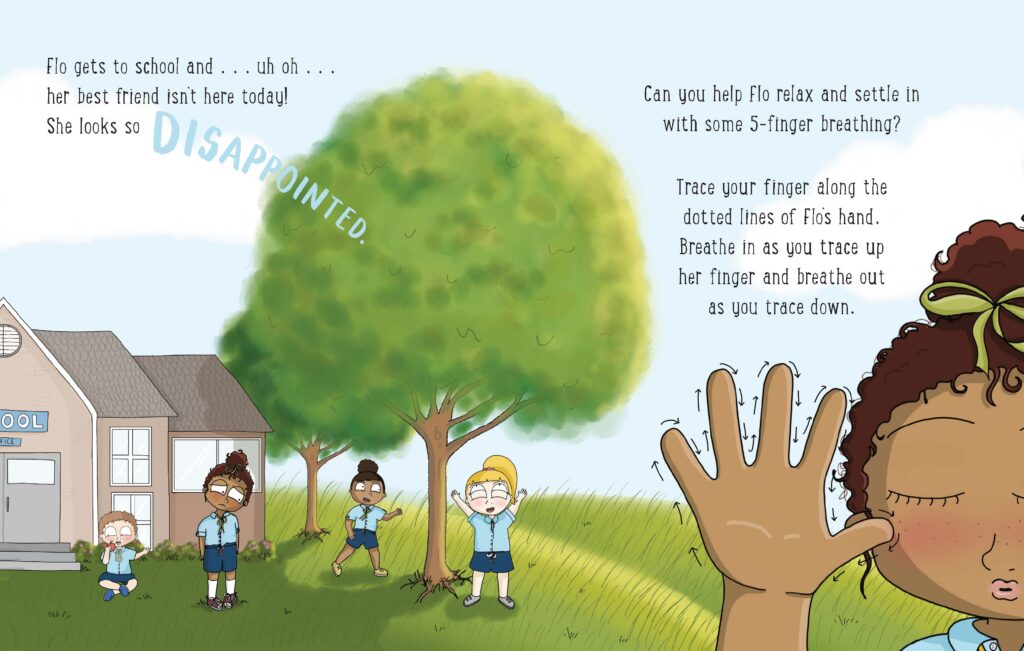
And there’s a reason. Writer Rebekah Ballagh has the chops for this. She is a counsellor, and has made her name through making easy-to-digest, illustrative Instagram posts about—what else—managing emotions. This is her second book for children, and she has also written a number for adults. I’m really happy to see someone with these sorts of credentials writing children’s books about managing emotions. It’s a fairly new area in children’s publishing but one that has been so useful to many, many parents and children, and Let’s Go, Flo! Is a great addition to this oeuvre.
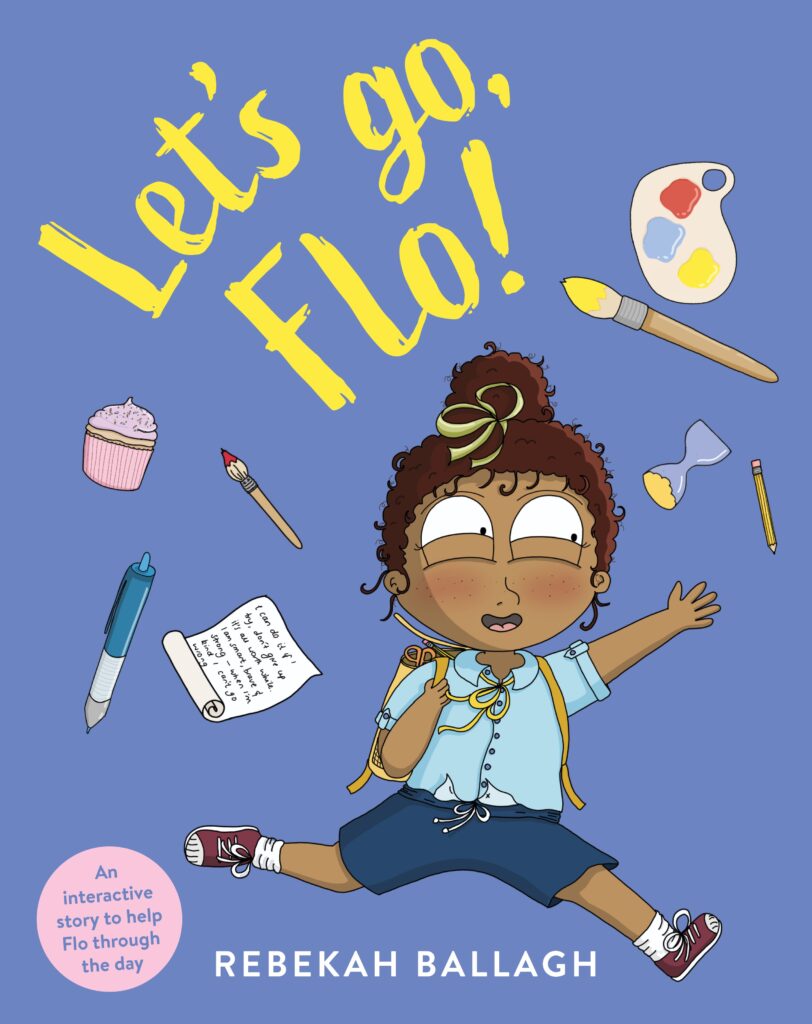
Honourable Mentions
For anyone using this list as a go-to for great interactive books, I have to give a shout out to a few books that don’t quite meet my standards for ‘interactivity’ but do require a lesser amount of audience participation:
The Little Ghost Who Lost Her Boo, by Elaine Bickell & Raymond McGrath
The ending to this book is unexpected and delightful because you don’t expect it to be interactive. The reader is asked to help the ghost find her boo by saying “Boo!” It’s adorable. And it’s from a Kiwi author!
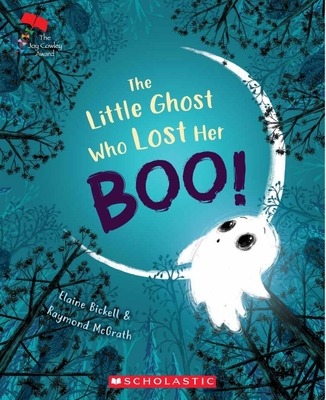
The Little Ghost Who Lost Her Boo
By Elaine Bickell & Raymond McGrath
Published by Scholastic NZ
RRP: $21.99
How To Count To One, by Caspar Salmon & Matt Hunt
You have to count a lot of single things in this book, which sounds like it might be boring, but the humorous text and illustrations, and the way the story builds up, are excellent examples of how to write a great read-aloud picture book.
Don’t Let The Pigeon…series by Mo Willems
On the surface these books are pretty silly. Well, let’s be honest, they’re pretty silly under the surface too. But the way kids get into the story and yell “No!” at the pigeon makes for a raucous read-aloud.
